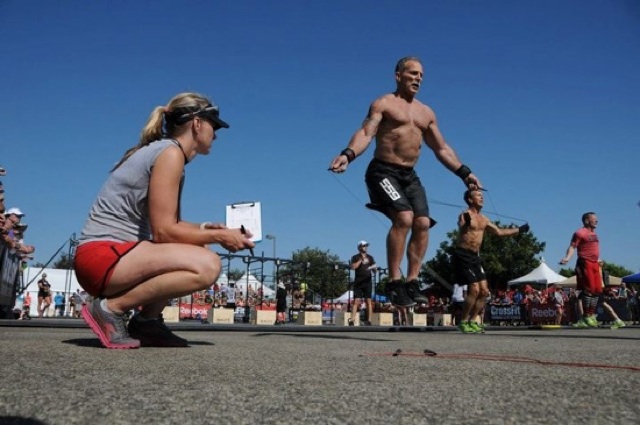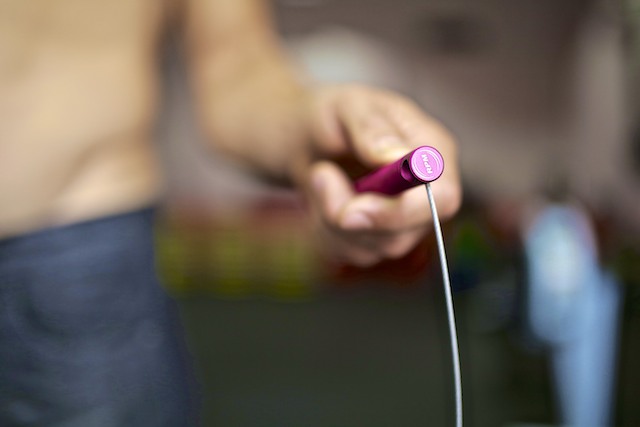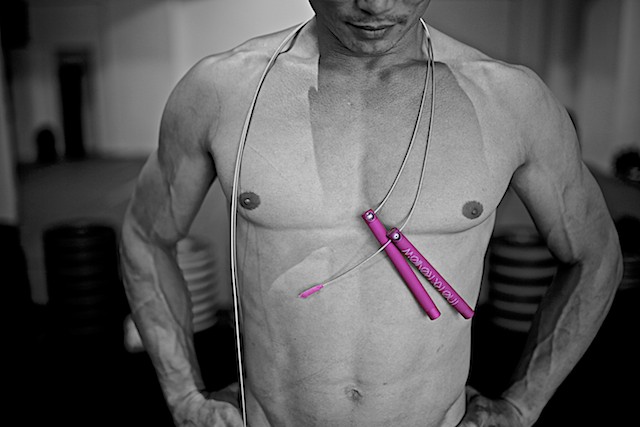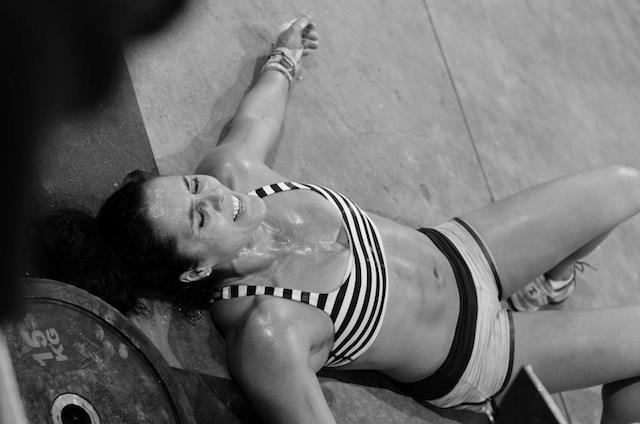
For many functional fitness athletes, mastering double-unders can be a long, sad road full of cramped calves and whip marks. So if you’re not naturally gifted in the jump-rope department, the thought of triple unders might be a bit daunting.
Triple unders are becoming more common in workouts in CrossFit affiliates across the world, with many CrossFit Games athletes now working on mastering the skill, just in case they appear in the programming during the 2014 CrossFit Season.
Let’s assume that you’ve done the hard yards and quite comfortable stringing dozens of double-unders together. The good news is that you can train for triple unders the same way you trained for your doubles.
Here are some tips to help get you started:

A fast rope is also helpful in mastering Triple Unders
You need a good jump: Go back to singles and then doubles and make sure you have a good jump. You need to eliminate piking and knee bend. While you can get away with these a little more with double-unders, they won’t cut it if you want to start stringing triples together. Get someone to watch you to see if you have any bad habits. It might help to try to replace the idea of jumping, with the idea of bouncing; you are trying to create acceleration and drive through the balls of your feet. It might even be worth practicing your bounding without using a rope. You should be able to consistently bound around 10″-15″ off the ground to be able to master triple-unders.
Practice speed control: Once you can maintain a smooth and consistent bounce, it is important to master your speed control. Work on speeding up and slowing down your double-unders. Not only will this give you extra mileage in WODs but it will give you the confidence of knowing that you are in control – as opposed to going ‘hell for leather’ to try and squeeze as many doubles in before the rope gets away from you.
The aim is to balance the speed of your wrist turn-over with the speed of your bounce. Being aware of the relationship between bounding height and wrist speed is crucial. Also – while ‘faster’ isn’t always better, quick wrist speed is important in triple-unders, and you will need to ensure any excess arm movement is eliminated. A fast rope will also make things easier.

Drills: The same drills you used to master doubles can be applied to triples. Practice the timing by bouncing on the spot and tapping your hands against the outside of your thighs three times while you are in the air to simulate the rope turn over. This helps to get the rhythm into your head. From there you can replace single-single-double with double-double-triple. Practicing double-unders at an accelerated pace will also prepare you better for triple unders.
Fast rope, slow jump: Triple unders are not about speeding everything up. To get a rope to pass under your legs three times, you are either going to have to jump higher, or speed the rotation of your wrists while you bound. A combination of both is usually the best. So while your wrist turn-over will speed up, your jump will actually slow down. Ideally, the rope will be moving faster while your bounce is higher and therefore slower.
It bears repeating to focus on the concept of the ‘bounce’. You can do a massive jump, reef your knees up to your ears and you might get one triple out, but you won’t be able to link them together efficiently until you have a nice relaxed springy bounce. Think kangaroos, pogo sticks and springy ballet dancers!
Check out this video of RPM sponsored athlete Shane Winsor progressing from single, to double, to triple unders. You should be able to notice not a lot changes when he switches from Singles to Doubles to Triples. Of course, the height of his jump changes, but his upper body looks the same. You can also see that in his triple unders, he lets the rope just barely clear his feet on the third revolution before he lands again. This gives him ample time to make a decent rebound jump as he heads into his next Triple.
http://www.youtube.com/watch?v=2QG5YX32scI


















Follow Us